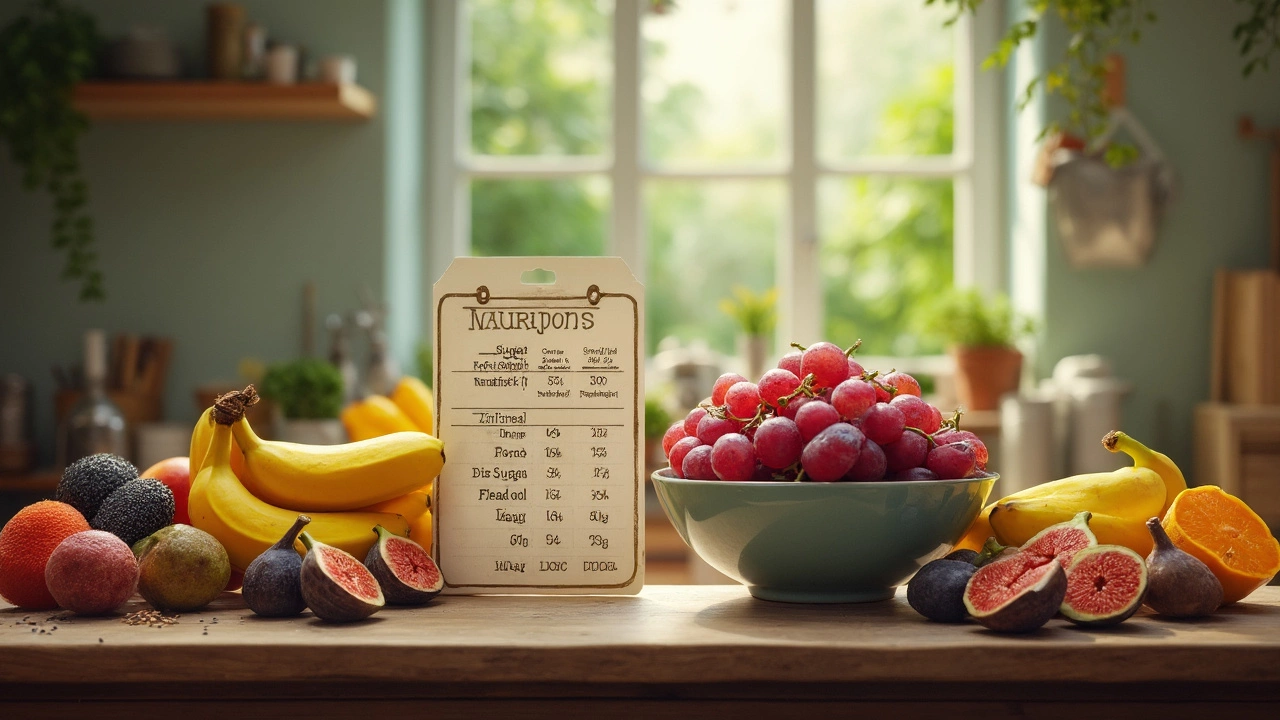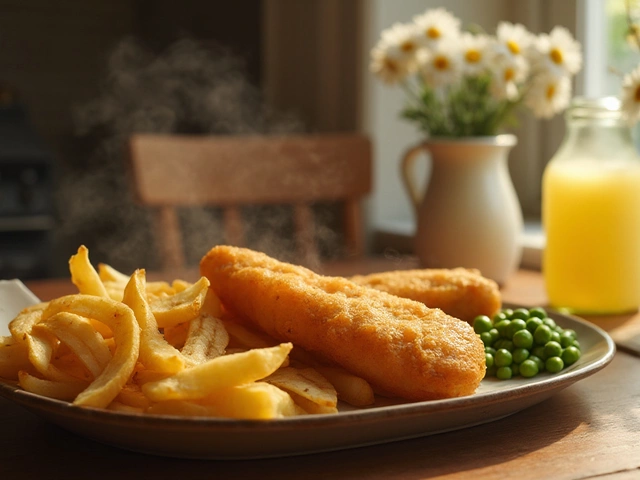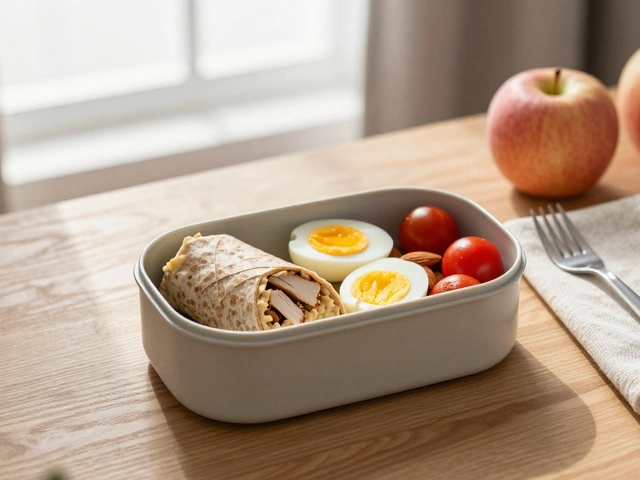
Fruit is supposed to be a health food, right? But here’s the twist—not all fruit deserves a golden halo. Some fruits pack way more sugar and calories than you’d expect, and if you’re not careful, that morning smoothie can do more harm than good.
Let’s get straight to it: the biggest red flag is how much sugar you’re actually eating. Things like mangoes, grapes, and bananas have much more sugar per serving than you’d guess. If you’re reaching for dried fruit or fruit juices, the sugar and calorie counts shoot through the roof. That handful of dried mango has more in common with candy than a salad.
It’s not about swearing off fruit entirely. Fruit can absolutely fit into a balanced recipe or meal, but knowing which ones to watch out for and how to use them makes a big difference. If you’re watching your weight, blood sugar, or just want to keep your snacks in check, choosing the right fruit—at the right portions—matters more than you think.
- What Makes a Fruit Unhealthy?
- Fruit Hall of Shame: The Top Offenders
- High-Sugar Fruit and Blood Sugar Spikes
- When Fruit is Too Much: Portion Control Tips
- Better Ways to Enjoy Fruit in Recipes
What Makes a Fruit Unhealthy?
We’re used to hearing that all fruit is healthy, but there’s more to the story. A fruit isn’t just healthy or unhealthy—it’s about what’s inside, how you eat it, and how it fits into your day. Here’s what actually tips fruit from the healthy zone to the not-so-great side.
The main thing? Sugar. Some fruits have as much sugar as a chocolate bar, and it’s easy to eat a lot more than you realize. Overdoing it can raise blood sugar and make it hard to stay on track with your health goals.
Here are the top reasons a fruit might be put on the ‘unhealthy’ list:
- Sugar in fruit – Too much fructose can mess with blood sugar, especially if you’re sensitive or have diabetes.
- Calories – Some fruits are way higher in calories than others. Dried fruit and bananas can really stack up.
- Lack of fiber – Fruits that have been juiced or processed lose a lot of their natural fiber. Without the fiber, that sugar hits your system fast.
- Portion size – It’s surprisingly easy to eat several servings at once, especially with smaller fruits like grapes or cherries.
- Additives – Packaged fruit or canned fruit syrup can sneak in loads of extra sugar and even preservatives.
Check out the sugar and calorie counts for a few common fruits:
| Fruit (1 cup) | Sugar (g) | Calories |
|---|---|---|
| Grapes | 23 | 104 |
| Dried mango | ~45 | 319 |
| Banana (1 medium) | 14 | 105 |
| Apple | 13 | 95 |
| Orange | 12 | 62 |
| Strawberries | 7 | 49 |
So next time you add fruit to your smoothie or snack, pay attention to what kind of fruit you’re using and how much. Try to stick with whole fruit that still has its skin and fiber. And go easy on juice or dried fruit—those can turn into most unhealthy fruit suspects faster than you’d think.
Fruit Hall of Shame: The Top Offenders
Some fruits are just sugar bombs disguised as healthy snacks. If you care about your sugar intake, or need to keep your calories on track, you’ll want to know which ones are sneaky troublemakers. Here come the main offenders, backed up by real numbers.
Let’s get something straight. Not all sugars are equal, but too much of even the natural kind can mess with your blood sugar or weight loss plans. Here are the fruits you need to keep an eye on:
- Mango: One medium mango packs around 45 grams of natural sugar—almost as much as a can of Coke. It’s tasty, but don’t fool yourself into thinking it won’t spike your sugar levels.
- Grapes: Twenty grapes (just a handful) contain roughly 16 grams of sugar. They’re easy to down in large amounts without noticing the sugar adding up fast.
- Bananas: A large banana delivers about 17 grams of sugar and 120 calories. They’re filling, but not great if you’re limiting carbs or watching your blood sugar.
- Cherries: Just one cup of cherries has 18 grams of sugar. Since they’re bite-sized, it’s way too easy to eat a lot at once.
- Dried fruit (like raisins, dates, or dried mango): These are next-level sugar and calorie dense. You get concentrated sweetness, so a small handful can load you up with as much sugar as a donut.
Check out how these stack up with other common fruits:
| Fruit (Serving Size) | Sugar (g) | Calories |
|---|---|---|
| Mango (1 medium) | 45 | 200 |
| Grapes (1 cup) | 23 | 104 |
| Banana (1 large) | 17 | 120 |
| Cherries (1 cup) | 18 | 87 |
| Apple (1 medium) | 19 | 95 |
| Dried Dates (1/4 cup) | 24 | 104 |
Don’t just take my word for it. As registered dietitian Cynthia Sass told Healthline:
"With dried fruits, you lose water but not the sugar, so there’s a lot more sugar in a smaller serving—and that can quickly add up if you’re not careful."
If you think you’re doing yourself a favor by switching from candy to dried fruit, the numbers say otherwise. The trick is sticking to fresh, whole fruits and watching how much you eat, especially these high-sugar types. That way you actually get the good stuff—fiber and vitamins—without the extra sugar sneaking in.

High-Sugar Fruit and Blood Sugar Spikes
If you’re trying to watch your blood sugar, not all fruit plays nice. Some fruits are basically sugar bombs, and even though that sugar is natural, it still hits your bloodstream fast. Ever noticed how eating a big bowl of watermelon leaves you hungry and tired an hour later? That’s the sugar rush and crash in action.
The biggest troublemakers are usually tropical fruits or really ripe fruits. Here’s a quick look at the amount of sugar (per 100 grams) in some popular options:
| Fruit | Sugar (g per 100g) |
|---|---|
| Mango | 14.8 |
| Grapes | 16.3 |
| Banana | 12.2 |
| Cherries | 12.8 |
| Watermelon | 6.2 |
| Apples | 10.4 |
Grab a handful of grapes or a mango smoothie and you could be knocking back as much sugar as a can of soda. And if you have diabetes, pre-diabetes, or just want to avoid energy slumps, this matters a lot.
“Fruit is part of a healthy diet, but portion size and type matter, especially for people watching their blood sugar,” says the American Diabetes Association.
Juices and dried fruits are even worse. A small box of raisins? That’s about 25 grams of sugar—no fiber, just straight sugar. And fruit juice skips the fiber too, so the sugar absorbs super quick.
- If you struggle with blood sugar spikes, stick to whole fruits instead of juice or dried versions.
- Berries (like strawberries and blueberries) are lower in sugar and cause less of a spike than tropical fruits.
- Pairing fruit with some protein, like nuts or Greek yogurt, helps slow down that sugar rush.
Measuring or eyeballing portions helps too. Even healthy eaters can overdo it when fruit is this sweet. If you’ve ever wondered why that “healthy” fruit salad leaves you wanting a nap, now you know.
When Fruit is Too Much: Portion Control Tips
It’s easy to go overboard with fruit. Chopping up a giant bowl of pineapple or downing several bananas in a day seems innocent, but it adds up. Fruit is still sugar and calories, so portion control matters, especially if you’re trying to manage your weight or blood sugar.
Here’s what a reasonable portion looks like:
- One medium apple or orange
- Half a large banana
- One cup of berries or melon cubes
- A small handful (about 2 tablespoons) of dried fruit
- Half a cup (4 ounces) of 100% fruit juice (not from concentrate)
Most dietitians say two servings of fruit per day is a good target for most adults. If you’re dealing with diabetes or trying to lose weight, stick to lower-sugar fruits, and don’t eat fruit on an empty stomach, since that can spike your blood sugar.
Check out how the sugar in fruit stacks up per common serving:
| Fruit | Serving Size | Sugar (grams) |
|---|---|---|
| Grapes | 1 cup | 23 |
| Banana | 1 medium | 14 |
| Mango | 1 cup | 23 |
| Apple | 1 medium | 19 |
| Strawberries | 1 cup | 7 |
| Blueberries | 1 cup | 15 |
| Dried Cranberries | 1/4 cup | 29 |
See how easy it is to overshoot your daily sugar just snacking on fruit? Instead of bottomless fruit bowls, try these strategies:
- Pre-portion fruit snacks into small containers instead of eating straight from the bag or bowl.
- Pair fruit with protein or healthy fats like a handful of nuts or a scoop of Greek yogurt. This helps slow the sugar hit and keeps you full longer.
- Choose whole fruit over juice or dried fruit to keep your portions and sugar in check.
- Mix low-sugar fruits (berries, melon) with high-sugar types (grapes, cherries) for better balance.
If you want to make fruit part of healthy recipes, use fruit as a topping—like a few berries on oatmeal or a few apple slices on peanut butter toast—instead of the main event. You’ll still get flavor and vitamins, but without piling on the sugars.

Better Ways to Enjoy Fruit in Recipes
Adding fruit into your diet can be awesome if you do it with some know-how. First off—whole fruit almost always beats juice or dried stuff. When you eat the whole fruit, you get fiber, which slows down sugar hitting your bloodstream and keeps you full longer. That’s a real win if you’re watching calories or sugar.
Here’s a quick stat that puts things in perspective: a cup of grapes has around 23 grams of sugar, while a cup of chopped strawberries is closer to 7 grams. Same goes for fruit juices—they might look innocent, but a single glass can hold as much sugar as a can of soda. Check out this handy table:
| Fruit/ Juice | Sugar (per cup/8oz) | Calories |
|---|---|---|
| Grapes | 23g | 104 |
| Banana | 14g | 105 |
| Apple | 13g | 95 |
| Strawberries | 7g | 53 |
| Orange Juice | 21g | 110 |
| Cranberry Juice (sweetened) | 31g | 137 |
If you want to use fruit in recipes without sending your sugar intake through the roof, try some of these tips:
- Swap out high-sugar fruits for berries, kiwi, or melon—they’ve got less sugar per serving but still add plenty of flavor.
- Add chopped fruit to unsweetened Greek yogurt instead of flavored yogurt. You control the sweetness, and it's got more protein.
- Go easy on dried fruits like raisins or dried mango. A small handful is fine, but it’s easy to overdo it since they’re so concentrated.
- Mix fruit into savory recipes, like a salad with grilled chicken and sliced strawberries, or a salsa made with diced mango and fresh lime. You use less fruit but still get flavor hits.
- If you’re making smoothies, toss in plenty of leafy greens and limit the amount of fruit. Aim for one serving of fruit max, then fill out the rest.
And when you’re picking a unhealthy fruit for dessert or a snack, balance it out. Pair it with a little protein or fat, like a handful of nuts or some cheese. That combo slows sugar absorption too.
Choosing smarter ways to eat fruit can help you enjoy the taste and benefits—without spiking your sugar or racking up calories by accident. Stick with whole fruits, mix up your choices, and keep an eye on portions for the best shot at staying healthy.





